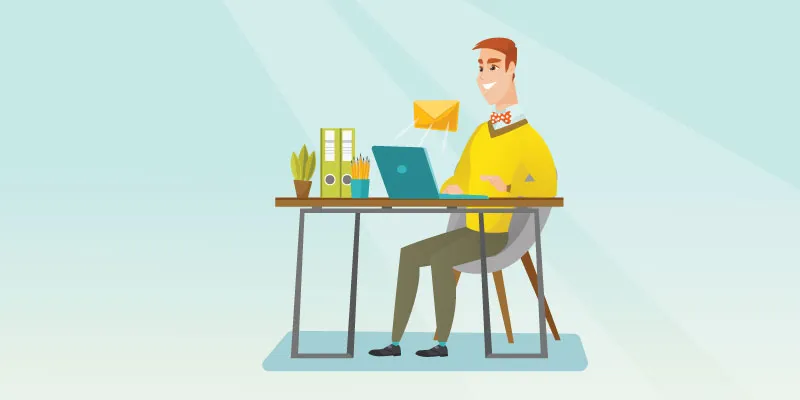Here’s how you can be a better person on email
All the spiel on face-to-face workplace communication aside, I am a big fan of email. It lets you put down your thoughts succinctly. It allows you to be thoughtful of the recipient’s schedule and pace. And often, it sets the stage of greater transparency within teams.
With that said, we now live in a fast-paced world, where Twitter has surely done away with the good-old written conversation. We inhabit a workspace where emails are considered to be annoying and pushy vis-a-vis persistent, one 50-word reminder or sales pitch an hour.

Image: Shutterstock
Like most things work and life, there is good and bad in email. The power to choose is eventually in our hands. After a decade of seeing (and often, participating in) good email and bad email, here are a few ways we can all do better - at email and in transparent, healthy communication in general.
That secret BCC is what they call “epic fail”
The secret BCC appears a lot like the email equivalent of Chinese whispers. It reeks of unnecessary secrecy and distrust. It also lets the BCC’d recipient hear only one side of the communication. And honestly, I have never seen the secret BCC in use in a healthy exchange.
Even if your intentions were in the right place, BCC often has recipients wonder who else you BCC on other emails. It is a sticky spot to be in. Workplace communication was meant to be much simpler. You can keep the recipient informed by forwarding the email in about 30 seconds or less or CC’ing them so it is all transparent.
The unnecessary midnight and holiday email is probably you being a show-off
People rarely work 24x7. And if they do, they need to stop. Even if you have a brilliant idea in the middle of the night, you appear to be trying too hard if you send it at unreasonably odd times. Save it and get back to it when the world is online. When you are away on vacation and your colleagues have enough ways to reach you, now more than ever, constantly checking in, reminding over email shows lack of trust in your team. You’d be better off enjoying your Mai Tai on the beach instead of staring into your email, typing away furiously.
If ASAP is the case, then a phone call is your best friend
When you send an email marked urgent or the dreaded ‘ASAP’, you almost imply that the recipient should be around waiting for your email just so they can respond. If they do respond 'ASAP' then they are either not really doing anything else or are killing their productivity by focusing on emails just as much as their tasks at hand. I, for one, don’t encourage it. If something is really urgent, pick up the phone and call.
Keep the ‘high importance’ exclamation point for priority emails
Truly a case of the boy who cried wolf, if all your emails come as ‘high priority’ to recipients - who have their own schedules and to-do lists to adhere to, it is only human nature to not take the ‘high priority’ seriously. It also comes across as unnecessarily edgy on the sender’s part.
Sending the same email to different people within the same team or organization is a little like casting fishing net and waiting for a catch
This is especially true in roles where customized emails are that much more important, but also a lot less convenient. I have found public relations and sales to be the biggest offenders of this. When you send the same email to multiple people within the organization, without copying each other, you are hoping that at least one of them would respond. Eerily similar to playing the game of chance, isn’t it? Instead, get to know your recipient’s individual interests, pain points, style and subject matter, and relentlessly customize. It might take a little extra time but rest assured, you will get a response more often than not.
If your email inbox is also your to-do list, your source of files and everything else, you are creating unnecessary dependencies
If you want to move away from email in order to focus on tasks at hand, it is critical that you treat your email as just a communication tool. Use specialized task apps that encourage productivity instead of skimming through emails for action items. Organize work files in a convenient spot on your desktop or your organization’s shared server for quick and easy access. It is a smart way to treat work and communication separately and single-task whenever possible.
There is no getting away from emails at work anymore. But with the right amount of discipline and treating work email with almost the same emotional intelligence you reserve for other aspects of official communication will serve you well.
Here are some more recommended readings on perfecting the art of workplace communication:
- Don’t let email come in the way of your productivity
- Manage your email overload, 2017 style
- There’s more to personalised email than first names. All you need is a little human touch
- How to write email subject lines that will increase your open rate
- How to craft the perfect cold email for maximum results







